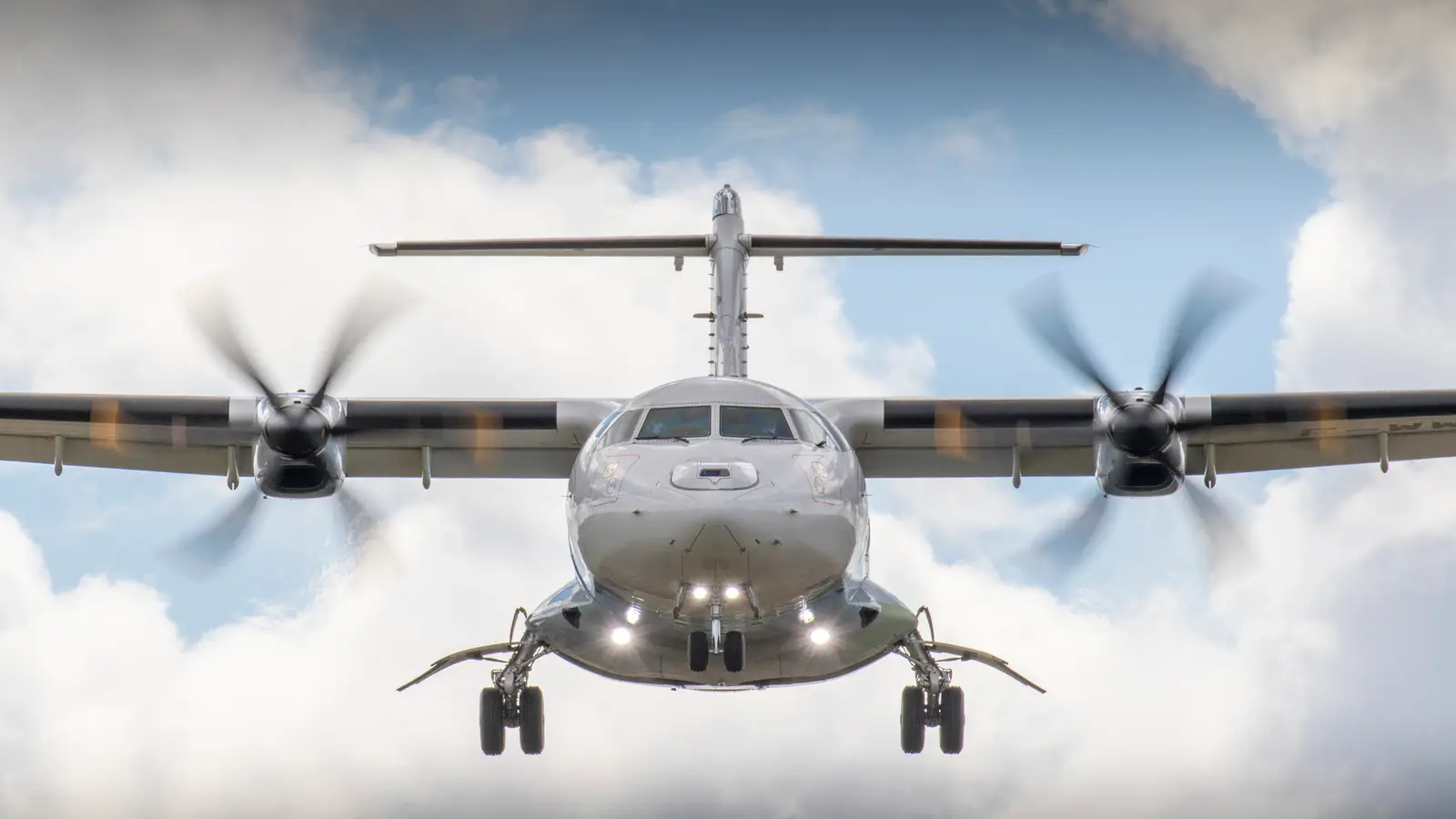
Franco-Italian aircraft manufacturer ATR is positive that turboprops could make a strong comeback in the US airline industry, as hundreds of 50-seat regional jets are set to be retired over the next decade. As such, 12 million more passengers could benefit from air service on new regional routes.
A study conducted by Georgia Tech showed that the retirement of the aging 50-seat regional jets, like the Embraer 145, is creating a critical void in US connectivity. The country’s regional air travel is poised for transformation, and ATR is adapting a US-tailored solution to address this shift, focusing on an upgraded passenger experience.
Seeing Demand For 300 Aircraft In The US
New data was presented on September 18 at the ATR regional Air Connectivity Summit, showing that regional air travel in the US is at a turning point. Approximately 300 regional jets are expected to retire over the next ten years, with almost one in ten regional airports projected to lose all scheduled air service. This could potentially deepen regional isolation, increase travel times, and reduce economic opportunities for underserved areas.
ATR projects a demand for up to 300 turboprops over the next 20 years to meet current and emerging demand. About 100 of those aircraft will be in demand due to a mode shift from ground to air transport. Despite the decline in 50-seat regional jets, the need for regional connectivity remains robust, presenting an opportunity for ATR. Dr Cedric Justin, Senior Researcher at Georgia Tech’s Aerospace Systems Design Laboratory, said:
“Our research shows that the retirement of 50-seat jets is not just an airline issue, it’s a national connectivity challenge. Without a viable replacement, entire communities risk being cut off from the air transport network.”
An Opportunity For ATR To Expand
By analyzing historical and current air networks, including a study by Seabury Airline Strategy Group, the data shows that there is a demand for 200 aircraft. With routes closing and demand remaining present, Seabury ASG found a market potential of up to 130 routes. However, they are missing the right aircraft. The analysis shows that a modern, efficient 50-seater aircraft like an ATR can cover the gap in the US regional market.
Further research by ATR, which analyzed travel patterns of 80 million US residents using all modes of transport, shows a demand for at least 100 more aircraft. The analysis identifies the potential for 12 million more regional passengers per year on routes below 400 nautical miles (740 km), connecting cities which currently have no direct flights. Altogether, this points to a projected demand of up to 300 aircraft in the coming years.
ATR aims to offer an efficient solution to reconnect communities, giving airlines an efficient way to unlock untapped demand and open new routes profitably, even with fewer passengers. There are currently no major US airlines operating ATR aircraft. However, Anchorage-based Aleutian Airways announced plans to induct ATR turboprops into its fleet to reconnect communities across Alaska. Charter carrier JSX also committed to ATR turboprops, signing a letter of intent for up to 25 aircraft.
Adapting To US Passenger Needs
ATR believes its aircraft offer a future-proof solution for restoring regional connectivity in the US with up to $2 million in annual savings per aircraft and 30% lower fuel and operating costs compared to regional jets. As it looks to take the opportunity to fill the gap, ATR has defined the optimal 50-seater solution in close collaboration with key stakeholders to meet the country’s evolving regional connectivity needs.
The new configuration combines proven efficiency with features tailored for the US market, including a new triple-class cabin, a front passenger door compatible with airbridges, onboard connectivity, and generous space for large cabin bags. It will also have a modern cockpit equipped for advanced navigation procedures.



